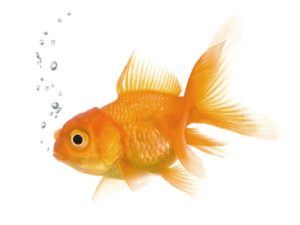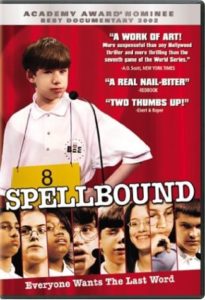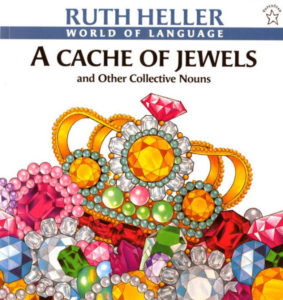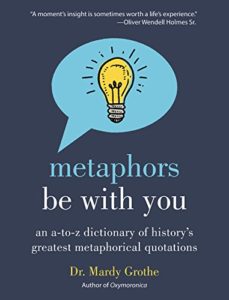Table of Contents
SPELLING
 |
Need practice? Spell Quiz has spelling lists and spelling bee words for grades 1 through adult. |
 |
By Raj Haldar and Chris Carpenter, P is for Pterodactyl (Sourcebooks Explore, 2018) – subtitled “The Worst Alphabet Book Ever” – is a hilarious alphabetical take on the awfulness of English spelling, in which not only is P for pterodactyl, but C is for czar, K is for knight, and T is for tsunami. For ages 7 and up. |
 |
By Beth Anderson, An Inconvenient Alphabet (Simon & Schuster/Paula Wiseman Books, 2018) is the picture-book story of how Benjamin Franklin and Noah Webster tried to simplify the alphabet and make English easier to read and write. For ages 5-8. |
 |
Ghoti is an alternative phonetic way to spell “fish.” Really. Read about it in this article from the New York Times. |
 |
It could all be so much simpler. See Teddy Roosevelt’s Bold (But Doomed) Battle to Change American Spelling. |
 |
Gerard Nolst Trenite’s poem Chaos is a famous example of the craziness of English spelling and pronunciation. (Supposedly if you can read it correctly, you’ll be speaking English better than 90% of the world’s native English speakers.) Warning: it’s not easy, |
 |
In Akeelah and the Bee (2006), an eleven-year-old from South Los Angeles – with plenty of troubles at school and at home – makes it to the National Spelling Bee. Rated PG. |
 |
Spellbound (2002) is an Academy Award nominee documentary about eight kids struggling to compete in the National Spelling Bee. Rated G. |
|
Try an online spelling bee! Look at the image and spell the word. Playable at two levels (easy and hard). |
|
 |
Are you ready to tackle the National Spelling Bee? See the Scripps National Spelling Bee website. Included are round by round lists of the words used in the most recent bee. |
 |
In Dana Middleton’s The Infinity Year of Avalon James (Feiwel & Friends, 2016), Avalon and best friend Atticus are waiting for the magic powers Atticus’s grandfather claims that they will develop in their “infinity year” between the ages of ten and eleven. At the same time, Avalon struggles to cope with a father in prison and works to become a spelling champion. For ages 8-12. |
 |
Poetry + spelling. An acrostic is a poem in which the first letter of each line, when read vertically, combine to spell a word. See What Is an Acrostic Poem? from Wonderopolis, or learn more about types of acrostic poems with some great examples here. |
COOL COLLECTIVE NOUNS
 |
Ruth Heller’s A Cache of Jewels and Other Collective Nouns (Puffin, 1998) is a gorgeously illustrated rhyming picture book in which readers learn about “batch of bread,” “muster of peacocks,” “parcel of penguins,” “fleet of ships,” “kindle of kittens,” and more. For ages 4-8. |
 |
By Matt Sewell, A Charm of Goldfinches and Other Wild Gatherings (Ten Speed Press, 2017) is a beautifully illustrated collection of collective nouns from the animal kingdom, organized in three sections: Land, Air, and Water. Learn about a sleuth of bears, a dazzle of zebras, a pod of pelicans, and a shiver of sharks. All ages. |
 |
Steve Palin’s A Murmuration of Starlings (Merlin Unwin Books, 2013) is an illustrated alphabetical list of collective animal nouns from Army of Frogs to Wisp of Snipe. All ages. |
 |
James Lipton’s An Exaltation of Larks (Penguin, 1993) is a classic for lovers of collective nouns or “nouns of assemblage,” with over 1000 collective words, ancient and modern. Fascinating for teens and adults. |
 |
From the drudge of lexicographers at Merriam-Webster, see these wonderful collective nouns. |
SIMILES AND METAPHORS
 |
In Audrey Wood’s Quick as a Cricket (Clarion, 2020), an imaginative little boy describes himself in rhyming similes. A fun interactive exercise – what are you loud as, quiet as, quick as, small as? For ages 4-8. |
 |
Loreen Leedy’s Crazy Like a Fox (Holiday House, 2009) is a story told entirely in similes – beginning with Rufus the fox who has been sleeping like a log. For ages 4-8. |
 |
What are similes and metaphors? Brian P. Cleary’s Skin Like Milk, Hair of Silk is a rhyming illustrated collection. The featured similes and metaphors are printed in color so readers can’t possibly miss them. For ages 6-10. |
 |
In Hanoch Piven’s My Dog is as Smelly as Dirty Socks (Dragonfly Books, 2012), each member of the family is described in terms of similes and illustrated with collage portraits, in which objects are used to show their various personality traits. Try making some of your own! For ages 4-8. Also by Piven, see My Best Friend Is Sharp As a Pencil (2010), a collection of classroom collage portraits. |
 |
Just for fun, see this project for Pablo-Picasso-style collage self-portraits. |
 |
Or try making recycled self-portrait collages. |
|
From Creativity School, see How to Make a Self-Portrait Collage for Kids. |
|
 |
Norton Juster’s A Surfeit of Similes (William Morrow, 1989) is a gem of a book, a charming collection of rhyming similes. (“As pure as an angel/As clever as zippers/As awkward as crutches/As friendly as slippers”) A lovely read for ages 7 and up. |
 |
Nancy Loewen’s You’re Toast (Picture Window Books, 2011) is a picture book of metaphors for ages 7-10. |
 |
Marvin Terban’s It Figures! (Clarion, 1993) introduces common figures of speech – similes, metaphors, onomatopoeia, alliteration, hyperbole, and personification – with helpful examples from classic literature and suggested writing exercises. For ages 9-12. |
 |
Mandy Grothe’s Metaphors Be With You (Harper, 2017) is an alphabetical collection of “history’s greatest metaphorical quotations,” selected from a wide range of sources including literature, philosophy, politics, and pop culture. (Helpful hint: an apt quotation is often a great help to a struggling writer.) For ages 13 and up. |
